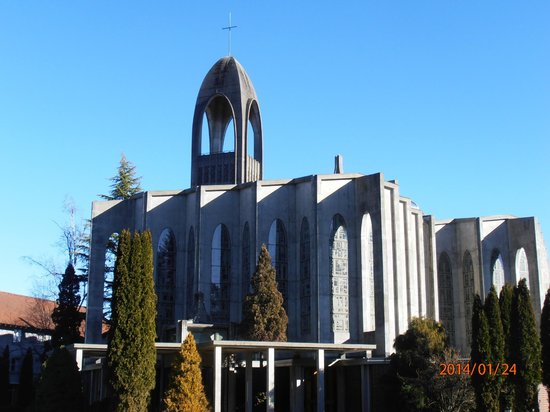Nahmanides (in his commentary to Deut. 16:22) writes that the Christians in his time had a custom of planting a tree at the entrance of their Churches.
Is there any corroboration validating the claim of such a custom at all, especially in Nahmanides' time and place (13th century Christian Spain)?
Her is the original Hebrew:
"ולא תקים לך מצבה" - מצבת אבן אחת להקריב עליה אפילו לשמים אשר שנא מזבח אדמה ומזבח אבנים צוה לעשות ואת זו שנא כי חוק היתה לכנענים ואע"פ שהיתה אהובה לו בימי האבות עכשיו שנאה מאחר שעשאוה אלו חוק לע"ז לשון רש"י ואם כן אסר הכתוב האשרה ואסר כל נוטע בהר הבית אע"פ שכוונתו לשמים ואסר המצבה לשמים ושניהם מפני חוקת הכנעניים אבל לא הבינותי החק הזה שהרי הכנעניים גם במזבחות גם במצבות היו נוהגים שהכתוב אומר ונתצתם את מזבחותם ושברתם את מצבותם (לעיל יב ג) כי את מזבחותם תתצון ואת מצבותם תשברון (שמות לד יג) וכן בכל מקום ואולי נאמר שהחזיקו הכנענים במצבות ולא היה להם בית ע"ז שאין שם מצבה להקטיר עליה ולצוק שמן על ראשה וכענין שנאמר בבעל (מלכים ב י כו) ויוציאו את מצבות בית הבעל אבל המזבחות היו במקצתן להקריב גם בהם והנראה בעיני כי היו הכנענים השטופים בע"ז עושים בכל בתי אלהיהם מזבח להקריב עליו הקרבנות ואבן גדולה מוצבת על פתח הבית לעמוד עליה הכומרים ואילן נטוע חוצה לה לאשר דרך הבאים שם וגם היום הנוצרים עושים כן והנה השם הנכבד שנא ומאס כל מעשיהם ואסר המצבה והאשרה ולא השאיר רק המזבח שהוא צורך הקרבנות אשר הוא יתברך צוה בהם והיו נחת רוח לפניו שאמר ונעשה רצונו מאז קודם היות ע"ז בעולם וטעם אשר שנא ביאור כי השם צוה (שמות כ כד כה) מזבח אדמה תעשה לי ואם מזבח אבנים תעשה לי וביאר משה כי באלה יחפוץ להוציא המצבה כי שנאה כי כל מעשיהם שנואין לפניו וצוה את ישראל שלא יעשו כמעשיהם אבל בימי יעקב לא נאמר עדיין ובחקותיהם לא תלכו (ויקרא יח ג) ולכך היה משתמש במצבה לשם שמים כמנהג העובדים והנה זו מצוה מבוארת מן ואם מזבח אבנים תעשה לי אבל מה שאמר בתורה (שם כו א) ופסל ומצבה לא תקימו לכם הם פסל ומצבה להושיב הפסל על המצבה לע"ז כי שם בענין ע"ז דיבר הכתוב אבל יאמר (שם) ואבן משכית לא תתנו בארצכם להשתחוות עליה אפילו לשמים מפני שהוא נראה כעובד לשכיות ההם כטעם האשרה שהיא מחוקות העמים ודע כי מזבח הוא בנין אבנים גבוה ולו קרנות ארבע ולו יסוד סובב יעלו על יסודו ומקריבים בין קרנותיו והמצבה אבן אחת גדולה ירימוה להקטיר או להקריב עליה או להיות הכומרים עומדים עליה והבמה כענין הר ועושים אותה מעפר מקובץ ועליה מזבח בנוי להקריב בו כי כל דבר רם וגבוה יקראו כן אעלה על במתי עב (ישעיהו יד יד) על במותי ארץ (דברים לב יג) גם גב האדם יקרא במה על במותימו תדרך (שם לג כט) וכן אמר הכתוב (מלכים א ג ד) וילך המלך גבעונה לזבוח שם כי היא הבמה הגדולה אלף עולות יעלה שלמה על המזבח ההוא



